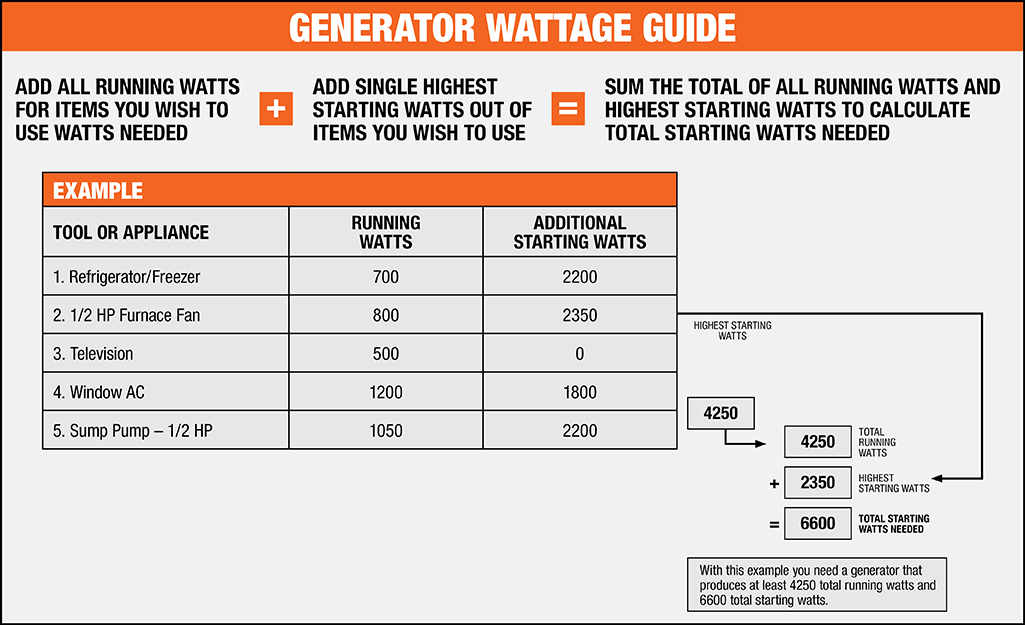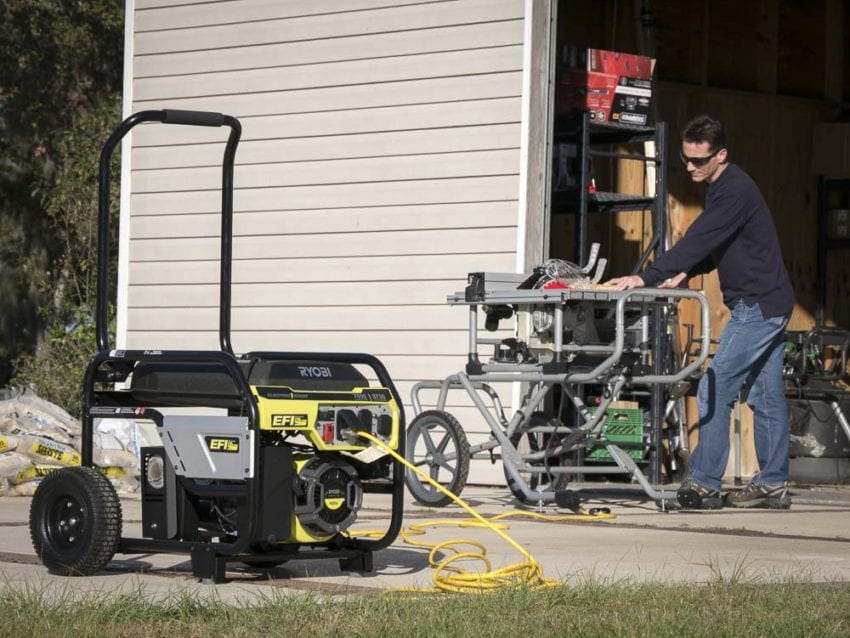Are you wondering how big of a generator you need to run power tools? Well, you’re in the right place! Generators are essential for powering our tools when we’re working in areas without electricity. But finding the right size generator can be a bit tricky. Don’t worry, though! In this article, we’ll break it down for you, so you’ll know exactly what size generator you need to keep your power tools running smoothly.
Now, let’s dive into the world of generators and power tools. You see, different power tools require different amounts of energy to operate efficiently. So, it’s crucial to choose a generator that matches the power requirements of your tools. We know it might sound a bit technical, but don’t fret! We’ll simplify it for you, making it super easy to understand.
So whether you’re a seasoned DIY enthusiast or just starting out, understanding how big of a generator you need for your power tools is essential. Let’s get started on this electrifying journey together! Keep reading to discover everything you need to know about choosing the perfect generator for your power tools.

How Big of a Generator Do I Need to Run Power Tools?
When it comes to powering your tools, having the right generator is essential. With so many options available, it can be challenging to determine the right size generator for your needs. In this article, we will explore the factors to consider when choosing a generator size for running power tools. Whether you are a DIY enthusiast or a professional contractor, understanding the power requirements of your tools and the capabilities of different generators will ensure you have the right equipment for the job.
Understanding Power Requirements
Power tools come in various sizes and wattage requirements, and it’s crucial to understand these power needs to ensure your generator can handle them. Each power tool has a wattage rating, which indicates the amount of power it consumes during operation. Tools like drills and saws typically have a lower wattage requirement, while larger tools such as air compressors or welders may require a substantial amount of power. It’s important to check the wattage rating of each tool you plan to use and add them up to determine the total power requirement for your generator.
If you are using multiple tools simultaneously, you also need to account for their combined power needs. It’s recommended to choose a generator with a higher wattage capacity to accommodate any surges in power demand that may occur when starting certain tools. A generator with a higher surge capacity will provide a stable power supply, reducing the risk of damaging your tools or the generator itself.
It’s also worth considering the power factor of your tools. Some tools, such as those with electric motors, have a higher power factor, which means they require more power to start. Choosing a generator with a higher starting wattage or a higher power factor rating will ensure that these tools can run smoothly without any issues.
Determining Generator Size
Once you have a clear understanding of the power requirements of your tools, it’s time to determine the appropriate generator size. Generator sizes are typically measured in watts or kilowatts (kW). To calculate the required generator size, you need to add up the wattage ratings of all your tools. For example, if you have a circular saw with a wattage rating of 1,200W, a drill with a rating of 800W, and a sander with a rating of 500W, the total wattage requirement would be 2,500W.
Remember to consider the power factor and any surges in power demand when calculating the generator size. If you have tools with a high power factor or tools that require a significant power surge during start-up, it’s wise to choose a generator with a higher capacity. This will ensure that your tools can operate smoothly and efficiently without overloading the generator.
It’s also important to consider any future power needs. If you plan to expand your tool collection or add more powerful tools in the future, it’s advisable to choose a generator with a higher capacity to accommodate these potential additions. Investing in a larger generator now can save you from the need to upgrade in the future.
Inverter Generators: A Compact and Efficient Option
When considering generator options for powering your tools, it’s worth exploring inverter generators. Inverter generators are known for their compact size and high fuel efficiency. They utilize advanced technology to generate clean and stable power, making them ideal for sensitive electronic devices and power tools.
Inverter generators provide consistent power, eliminating the risk of surges or fluctuations that can damage your tools. They also offer a quiet operation, reducing noise pollution in your workspace. Inverter generators are available in various sizes, making it easy to find one that suits your specific power requirements. While they may be slightly more expensive than conventional generators, their advantages make them a popular choice for professionals and homeowners alike.
Choosing the Right Generator Size: Tips and Considerations
Now that you understand the factors involved in determining the right generator size for your power tools, here are some tips to help you make an informed decision:
- Account for future growth: Consider any future power needs and choose a generator with slightly higher capacity to accommodate potential additions to your tool collection.
- Research specific tools: Some power tools may have unique power requirements or recommendations from the manufacturer. Make sure to research and understand the specific needs of each tool.
- Consider fuel efficiency: If you plan to use your generator for extended periods, consider choosing a model known for its fuel efficiency to minimize operating costs.
- Portability: If you require a generator that can be easily transported to different job sites, consider the weight and size of the generator to ensure it is manageable.
- Read customer reviews: Before making a final decision, read customer reviews and ratings of different generator models to ensure their reliability and performance.
Conclusion: Choose Wisely for Optimal Performance
When it comes to running power tools, selecting the right generator size is crucial for optimal performance and safety. Understanding the power requirements of your tools and calculating the total wattage will help you determine the appropriate generator size. Inverter generators, known for their compact size, fuel efficiency, and stable power output, are worth considering for a seamless and efficient operation. By carefully considering your current and future power needs and following the tips provided, you can confidently choose the right generator to power your tools and complete your projects with ease.
Key Takeaways: How Big of a Generator Do I Need to Run Power Tools?
- A generator’s size is measured in watts, so determine the total wattage of your power tools to calculate the generator size you need.
- Consider the starting wattage of power tools, as some may require an extra surge of power when turning on.
- Assess the running wattage of your tools to determine the continuous power needed for their operation.
- Include additional electrical appliances or devices that may be connected to the generator concurrently.
- Choose a generator with a wattage rating that is equal to or higher than the total wattage calculated from your tools and appliances.
Frequently Asked Questions
When it comes to running power tools, it’s essential to have a generator that can handle the workload. Here are some commonly asked questions to help you determine how big of a generator you need:
1. Can I use any generator to power my tools?
Not all generators are suitable for powering tools. Power tools require a generator with enough wattage and consistent power output. It’s crucial to choose a generator specifically designed for powering tools to ensure optimal performance. These generators are often referred to as “contractor” or “jobsite” generators. They are built to withstand the demands of power tools and provide stable power for extended periods.
Additionally, make sure the generator has the right outlets to match your power tools. Most power tools use standard 120-volt outlets, but some heavy-duty tools may require 240-volt outlets. Confirm the generator’s voltage and outlet options before making a purchase.
2. How do I determine the wattage I need for my tools?
Determining the wattage requirements for your tools is crucial in selecting the right generator. Most power tools have a wattage rating, which you can typically find in the tool’s manual or on the manufacturer’s website. Add up the wattage of all the tools you plan to run simultaneously to calculate the total wattage needed.
It’s important to consider the starting wattage, as some tools require an extra surge of power to start up. For such tools, multiply the starting wattage by a factor of 1.5 to ensure your generator can handle the initial load. Add this adjusted starting wattage to the total wattage required by all the tools to get the overall wattage you need.
3. What size generator do I need for basic power tools?
For basic power tools like drills, circular saws, or sanders, a generator with a minimum wattage of 2,000 to 3,000 watts is usually sufficient. This power range can handle most small to medium-sized tools without any issues. However, if you plan on using high-powered tools or running multiple tools simultaneously, you may need a generator in the range of 4,000 to 6,000 watts.
Always check the wattage requirements of each tool you intend to use and choose a generator that can comfortably handle their combined total, including any surges during startup.
4. How big of a generator do I need for heavy-duty tools?
Heavy-duty tools such as air compressors, welders, or large table saws require a more robust generator. Generally, a generator with a wattage range of 6,000 to 10,000 watts should be sufficient for most heavy-duty tools. However, it’s important to check the specific wattage requirements of your tools, especially if they have high starting wattages or operate at a higher voltage.
Remember that when dealing with heavy-duty tools, it’s always better to have a generator with a slightly higher wattage rating than what’s required to ensure smooth operation and prevent any power issues.
5. Can I connect multiple generators to power my tools?
While it is possible to connect multiple generators in parallel to increase the power output, it’s not recommended for powering tools. Connecting generators in parallel requires specialized equipment and precise synchronization to ensure proper power distribution. It’s generally more practical to invest in a single generator with the appropriate wattage to meet your tool’s needs.
If you require more power than a single generator can provide, consider upgrading to a larger generator that meets your requirements or consult an electrician to explore alternative power solutions.

Summary
Okay, let’s sum it all up! If you want to run power tools, you should think about two important things: the wattage of your tools and the size of your generator. Make a list of the tools you plan to use and check their power requirements. Add up all the watts to know the total power needed. Then, get a generator that can handle that amount of power and even a little bit more, just to be safe. Don’t forget to consider starting watts too!
When it comes to generator sizing, it’s better to err on the side of caution. A bigger generator is always better because it can handle more power. But don’t worry, you don’t have to buy the biggest one out there. Look at the wattage requirements of your tools and find a generator that can cover the total power needed. And remember, if you have other things like lights or appliances that you want to use at the same time, factor in their power requirements too. It’s all about finding the right balance between power and size. Happy tooling!
